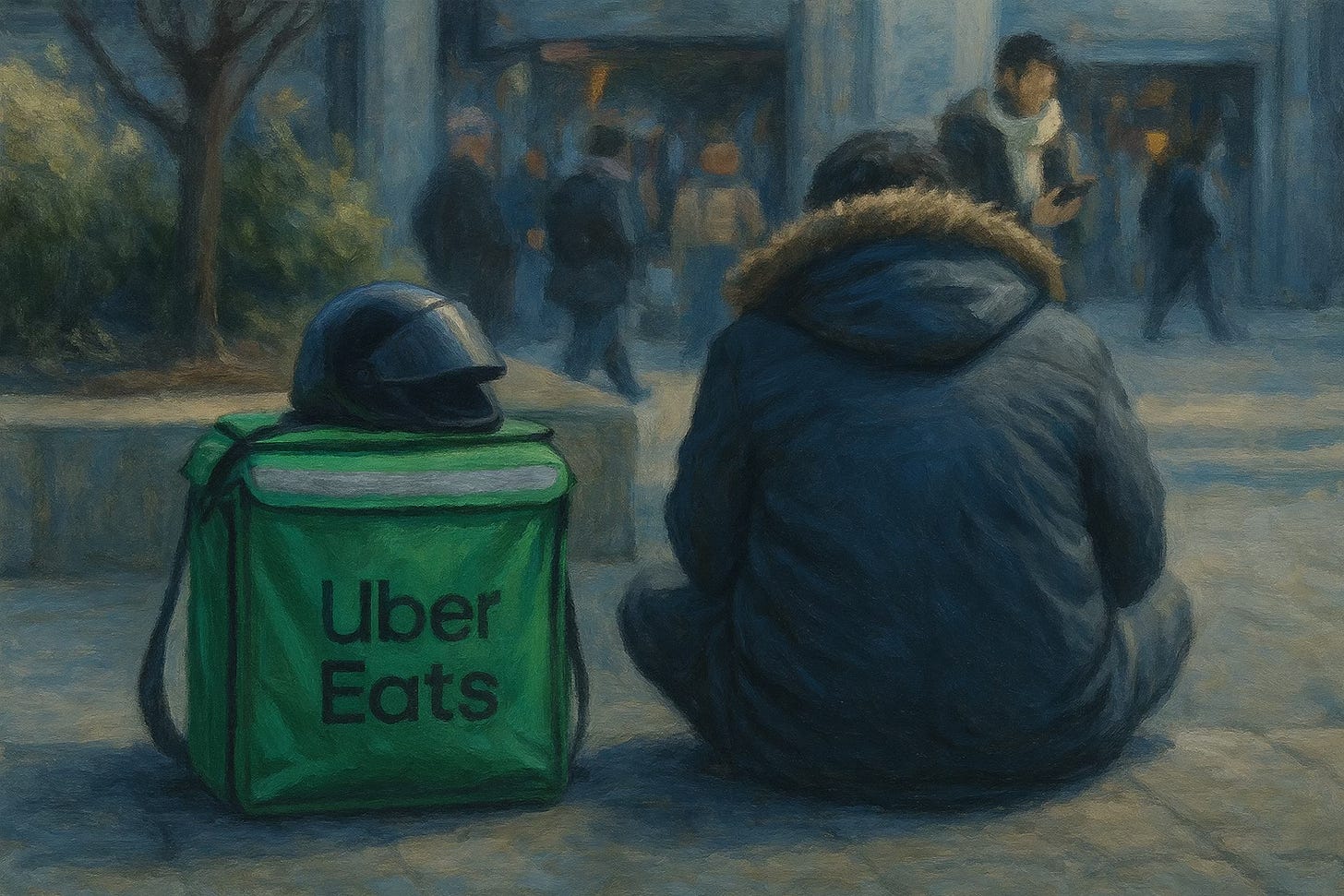The Waitlist Economy
Goldman says everything's fine. America fights over DoorDash shifts.
According to the spreadsheet jockeys at Goldman Sachs, the American economy is humming. They forecast 2.5% GDP growth for 2025, a number that conveniently outpaces everyone else’s predictions. If you only look at the aggregate data, the machine looks healthy.
But lift the hood and the engine is on fire.
While the headline numbers suggest a soft landing, the actual labor market is undergoing a brutal dislocation. Call it a Great Reallocation if you want to sound like an economist. Or just call it what it is: a purging of the American workforce.
Through October 2025, employers announced over 1.1 million job cuts. That’s a 65% increase over the previous year. October alone saw more than 153,000 cuts, the highest for that month in twenty-two years. The corporate social contract, that unwritten rule where you don’t fire people between Thanksgiving and Christmas? Torched.
The Forever Layoff era is here. Companies aren’t cutting fat because they’re in crisis. They’re cutting muscle because they can.
For the first time, the boogeyman isn’t offshoring. It’s software. In October alone, over 31,000 termination announcements explicitly cited AI as the reason. Goldman’s own researchers estimate that a quarter of U.S. employment tasks could eventually be automated. The displacement is happening right now. The promised new jobs remain purely theoretical.
So where do 1.1 million people go?
They slide into the gig economy. About 15% of the officially unemployed are actually scrapping for hours on Uber, DoorDash, and Instacart.
But the lifeboats are full.
For years, the gig economy was the ultimate safety valve. You lose your job, you drive a car, you survive. Not anymore. In cities across the country, people trying to sign up for DoorDash or Instacart are hitting waitlists that last weeks or months. The barrier to entry for delivering a burrito used to be zero. Now there’s a queue.
This saturation allows the platforms to treat workers like disposable widgets. With a surplus of desperate labor, there’s no need for peak pay or incentives. DoorDash can push modes that effectively lower wages because they know if one driver refuses the crumbs, a dozen others are waiting.
The average gig worker earns about $18 an hour, roughly half the economy-wide average. When you take a mid-career professional from a tech job and shove them into a delivery car, they aren’t reallocated. They’re impoverished.
This is a zombie workforce. Solvent enough to stay off the street but too broke to drive the consumption the economy relies on.
It didn’t have to be this way. While the UK is cracking down and tightening labor supply, Washington went the other direction. The Department of Labor stopped enforcing stricter worker classification rules and reverted to looser standards. That gave corporations the green light to keep this underclass unregulated and unprotected.
So go ahead and celebrate the GDP growth. Pop the champagne for the resilient economy. Just don’t look too closely at the 1.1 million people standing in line, waiting for an algorithm to tell them they’re allowed to work for eighteen bucks an hour. The economy isn’t working for them. It’s feeding on them.
References:



This is brutal and chilling. Also indicative of sectoral disparities, if I'm not mistaken: sans AI, the US economy is functionally un a recession. And given that the horses have been getting spooked about overheated valuations there...